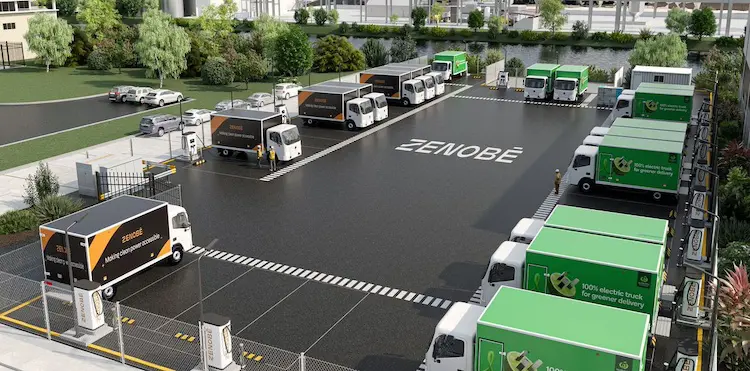Electric vehicles (EVs) have crossed a pivotal threshold in 2023, transforming from niche novelty to mainstream mobility. A striking 2023 report from Bloomberg Green highlights an impressive 60% increase in EV adoption globally, driven largely by advancements in fast-charging networks. These networks are not only making EV ownership more practical but are also revolutionizing how we experience road trips. In this article, you’ll discover how fast-charging networks are changing the landscape of EV travel and what this means for your next big adventure.
Fast-Charging Networks: The Backbone of EV Road Trips
In the past, the idea of embarking on a long road trip in an electric vehicle often raised eyebrows due to limited range and sparse charging infrastructure. Fast forward to 2023, and the scenario has dramatically changed thanks to a robust expansion of fast-charging networks.
Expansion and Accessibility
Fast-charging networks have expanded at an unprecedented rate. According to Reuters Mobility, there are now over 1.5 million public charging stations worldwide, with fast chargers making up 40% of this number. Brands like Tesla, Rivian, and Volkswagen have been at the forefront of this expansion, deploying thousands of Superchargers and Electrify America stations across North America and Europe.
- Tesla’s Supercharger Network: With over 45,000 Superchargers globally, Tesla continues to lead the charge. The network’s expansion into rural areas and along major highways ensures that Tesla owners can venture far from urban centers with confidence.
-
Rivian’s Adventure Network: Rivian has launched its Adventure Network, emphasizing off-the-beaten-path locations perfect for outdoor enthusiasts. This includes remote charging spots in national parks and scenic routes.
-
Electrify America’s Growth: Electrify America, a Volkswagen subsidiary, aims to have 10,000 ultra-fast chargers across the US by the end of 2024, focusing on urban hubs and cross-country routes.
Speed and Efficiency
Fast chargers have become significantly faster, reducing downtime during road trips. InsideEVs reports that the latest chargers boast speeds up to 350 kW, capable of juicing up compatible EVs in as little as 15 minutes. This means less time waiting and more time exploring.
- Battery Technology Advancements: New battery chemistries, such as solid-state batteries, are being developed by companies like Hyundai and Nissan. These not only promise greater energy density but also faster charging times, making long-distance travel even more feasible.
How to Plan an EV Road Trip in 2023
Planning an EV road trip in 2023 is easier than ever, thanks to improved charging infrastructure and user-friendly tools. Here’s how you can make the most of your journey:
Mapping Your Route
- Utilize Apps: Use apps like A Better Routeplanner or PlugShare to plan your route. They provide real-time data on charging station availability and estimated charging times.
-
Consider Range: Consider the range of your EV and plan stops accordingly. Most modern EVs, such as the Ford Mustang Mach-E and Lucid Air, offer ranges exceeding 300 miles on a single charge.
Charging Tips
-
Optimal Charging Levels: To maximize battery health and efficiency, charge your EV to 80% rather than full capacity unless necessary. This is particularly important for vehicles like the Tesla Model 3 or Hyundai Ioniq 5, known for their rapid charging capabilities.
-
Time Your Stops: Sync charging stops with meal breaks or sightseeing to make the most of your time. This approach not only optimizes your travel schedule but also adds leisure to your journey.
The Future of Fast-Charging Networks
As charging technology continues to evolve, the future looks even brighter for EV road trips. Here’s what we can expect:
Wireless Charging
Wired magazine reports that wireless charging is on the horizon, with pilot projects already underway in urban areas. This technology will allow EVs to charge seamlessly while parked, potentially transforming how we think about charging entirely.
Solar-Powered Stations
CleanTechnica highlights the rise of solar-powered charging stations, which are set to make EV travel even more sustainable. These stations harness renewable energy, reducing the carbon footprint of EV travel and promoting environmental stewardship.
Integration with Smart Grids
As reported by the International Energy Agency (IEA), smart grids are integrating with charging networks to better balance energy demand and supply. This ensures that EVs are charged using the cleanest and most efficient energy sources available.
Conclusion
Fast-charging networks are not just a convenience; they are a revolution in how we travel. With their rapid expansion, increased speed, and user-friendly features, fast-charging networks are making EV road trips a viable and exciting option for more drivers than ever before. As technology continues to advance, the world of EV travel will only become more accessible and sustainable.
Are you ready to hit the road in your electric vehicle and explore new horizons? Share your thoughts and experiences in the comments below. The future of travel is electric, and it’s happening now!

